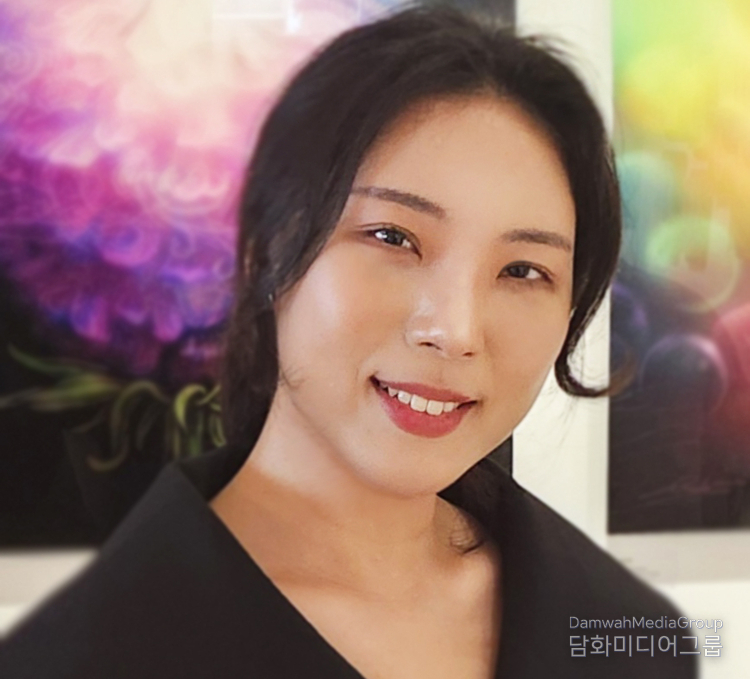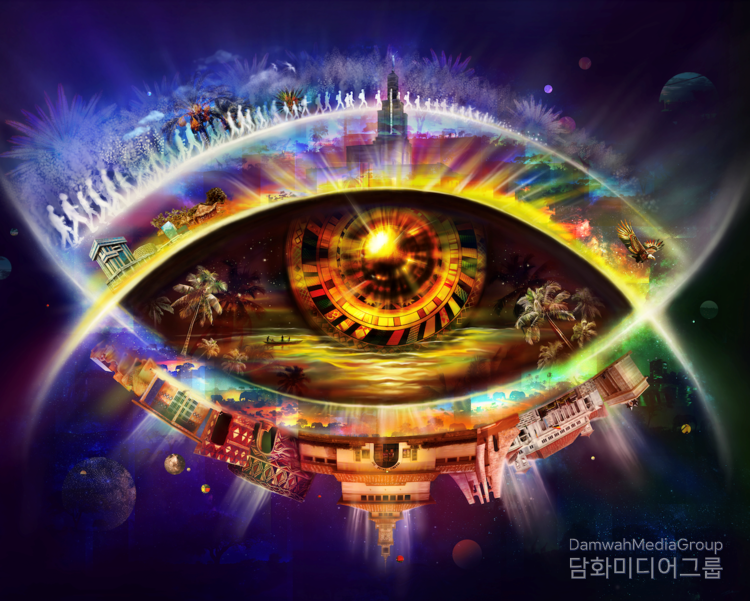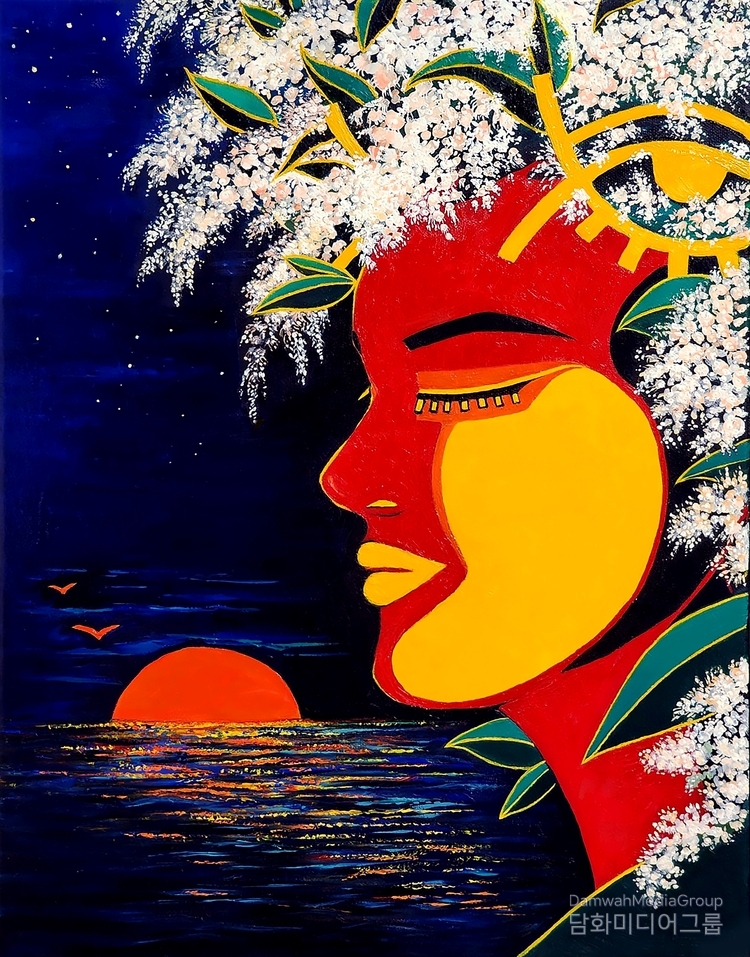By Diplomacy Journal Lee Kap-soo
In 2024, the bond between Korea and Africa was strengthened through a series of significant events. The Korea-Africa Summit featured the <Harmony in Symbols> exhibition, which was sponsored by the Ghanaian Embassy and showcased the works of ten notable Korean artists. These artists used traditional Ghanaian Adinkra symbols in their unique works. The exhibition was a highlight of cultural and artistic events during the summit. One of the notable artists we met was Yi Seo-hoo, whose use of the Abode Santann symbol, symbolizing cosmic power and omnipresence, has gained recognition. –Ed.

Question: How do you feel about participating in the <Harmony in Symbols> exhibition?
Answer: It was a great honor to participate in an exhibition that connects Korean and African cultures. I was thrilled to join the exhibition, especially when I heard that donating a painting based on Adinkra symbols would contribute to building a library for children in Ghana. Much of the credit goes to Art Director Esi Han, who meticulously planned this exhibition and invited ambassadors from various African countries, making it a spectacular event.
Q: <Harmony in Symbols> is an internationally significant exhibition that aims to harmonize Ghanaian and Korean cultures. As a new emerging international convergent artist who specializes in design, humanities, and art, could you please elaborate on the meanings behind the two pieces you donated from the perspective of harmony and convergence?

A: Let me first explain the piece titled ‘Dawn of Africa.’ This painting is dedicated to Ghana, the first African country to gain independence, earning it the nickname 'Dawn of Africa.' The prominent Adinkra symbol, Abode Santann, represents the interconnected universe. Through this symbol, I aimed to depict Ghana's strength, pride, and future potential. Starting from the center of the painting, a golden eye opens the dawn over the West African coast, as the eagle, a symbolic animal of Ghana, soars into the eastern sky.
Above this, radiant souls march through the flow of time. The eye, reflecting sunlight, symbolizes the intersection of two planets, and the symbolic architecture represents Ghana’s past and present. The overall theme portrays Ghana’s potential and spirituality welcoming a new morning within a vast universe where darkness and light coexist. This storytelling is brought to life using digital painting, collage, and generative AI techniques.
Q: Indeed, the large Diasec print of over 160cm vividly conveys the story and images of the painting. What about the second piece?

A: The second piece is an oil painting titled "Myth of the Genesis." It depicts the first day of creation, showing the primordial goddess in meditation after completing the creation. The face of the goddess was inspired by a woman from the Ghanaian Ashanti tribe. A white flower above her head is painted using texture techniques to represent the Retusa Fringe Tree flower, symbolizing abundance and prosperity in Korea. The painting features new life budding, a red bird basking in the sunlight, heralding a new era, and conveying hope and vitality for the future of both nations. By integrating cultural elements from Korea and Ghana, the work metaphorically represents the universal interconnectedness inherent in Abode Santann.
Q: The oil painting evokes a unique feeling, particularly because it was chosen as the featured image for the poster of GGGI at the summit invitation event, giving it even greater significance. What feedback did you receive from the people of Ghana about this painting?
A: Displaying my paintings to many people from Africa filled me with immense pride and emotion as an artist. They expressed great interest in my work and were deeply impressed that a Korean artist had extensively studied Ghana’s culture, history, and architecture to authentically create art for the Ghanaian people. I felt happy and grateful that my sincere efforts resonated with them. I hope that such cultural and artistic exchanges continue to flourish, paving the way for a future where Korea and many African countries can open new horizons together.
Q: I believe your work will positively influence cultural exchanges between Korea and Ghana. Do you plan to continue creating works related to African culture? Additionally, you have published numerous scholarly and non-fiction works besides your art activities. Could you share your future aspirations related to these activities?
A: Through this exhibition, I was captivated by the intense energy, deep philosophy, and symbolic meanings conveyed by African artistry. Therefore, I plan to present works that delve deeper into the cultures of Africa and Korea at the <Young & Future Art Fair> in Insa-dong this October. I see Africa as a source of inspiration, a place to explore the essence of nature and humanity. I aim to expand my artistic horizons with this sentiment, contributing to cultural exchanges between Korea and Africa. I hope my research, writings, and paintings serve as bridges for academic exchange, international communication, and conveying genuine emotions and inspiration between people.
Q: Your aspirations align with the ideology of Hongik University, where you studied, which aims to benefit humanity widely. You studied Visual Design at the College of Fine Arts at Hongik University, then Interaction Design at the Zurich University of the Arts (ZhdK), and you are currently pursuing Digital Media Design at the International Design School for Advanced Studies (IDAS) at Hongik University. Could you share why you chose your current educational path and any advice for aspiring designers or artists?
A: As I speak with many young adults, I've noticed that they often question the value of academic experience in an era where technology, like AI, is rapidly advancing. It's a crucial question to ponder. In my book, AI Branding, I argue that establishing one's unique path and originality is essential for survival in the new era. The roles of an artist, scholar, professor, influencer, and entrepreneur are not vastly different. What matters is branding your story. Hence, I chose to study at the International Design School for Advanced Studies (IDAS) at Hongik University, where I could engage in international and multidisciplinary research, learning immensely in the process.

